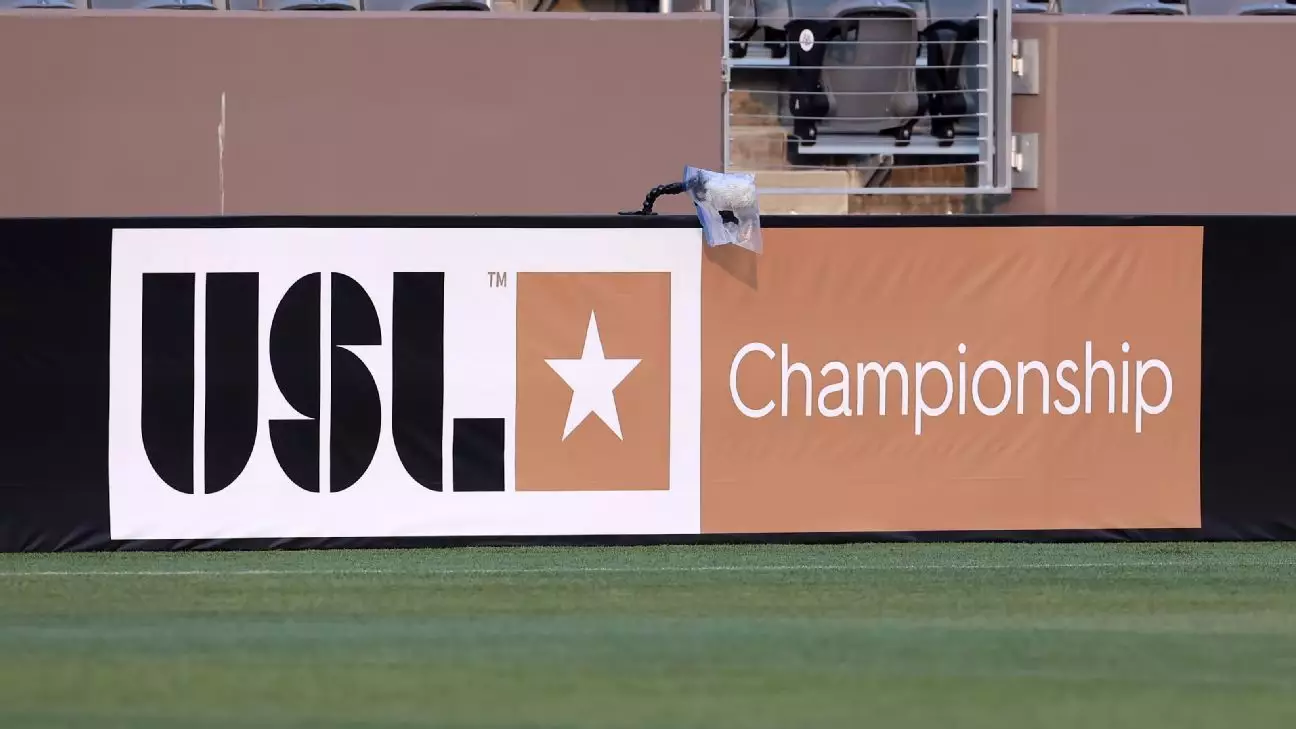The landscape of professional soccer in the United States is on the brink of significant transformation, as the United Soccer League (USL) has announced its intention to launch a Division One men’s professional league by 2027. This initiative is poised to create a formidable rivalry with Major League Soccer (MLS) and represents a pivotal moment in the evolution of soccer in the United States. By examining the implications of this move, we can gain insight into how it might reshape the soccer ecosystem in the country and offer greater access to a wider array of opportunities for clubs and players alike.
On a day deemed historic by USL executives, CEO Alec Papadakis highlighted the league’s commitment to fostering a deep-rooted soccer culture in American communities. The new Division One league will operate distinctly from MLS, albeit within the same professional sanctioning framework established by the U.S. Soccer Federation. Papadakis voiced clear aspirations that extending the scope of top-tier soccer across various cities would not only enhance competition but also stimulate community engagement and investment in the sport at a grassroots level.
The initiative aims not only to elevate the level of soccer but also to stimulate the local economy by creating jobs and opportunities that can rejuvenate communities that may be underserved by current professional sports offerings. By establishing a second premier division, USL is taking an important step toward a more inclusive and comprehensive soccer structure that mirrors the promotion and relegation systems ubiquitous in global football.
The introduction of this new Division One league will add a tier to an already established pyramid consisting of the USL Championship (Division Two) and USL League One (Division Three). This progression echoes the fundamental changes in professional soccer across the globe, where pathways for rising talent are marked by opportunities for advancement. Such a system will allow teams to aspire to greater heights based on performance rather than a fixed franchise model like that of MLS.
In addition, the promise of a promotion and relegation framework could invigorate competition, ensuring that the clubs are continuously battling for better seasons while providing a safety net for maintaining club integrity and community ties. Within this dynamic, clubs will enjoy increased autonomy, fostering a sense of synergy between local identities and the broader fabric of American soccer.
USL’s commitment to the sport does not stop at merely establishing a new league; it is bolstered by the impending events, such as the 2025 FIFA Club World Cup and the 2026 FIFA World Cup, which will be hosted in the United States, Canada, and Mexico. The anticipation surrounding these tournaments is expected to catalyze greater participation rates and interest in soccer at all levels across the nation.
Papadakis underscored the immense potential for soccer’s growth, envisioning an enriched soccer ecosystem not merely centered in metropolitan areas, but sprawling across towns of varying sizes. This vision hinges on the belief that there is a latent appetite for the beautiful game that, when tapped, could give rise to a robust network of soccer clubs and passionate fan bases.
As USL looks to fortify the men’s soccer landscape, it is equally committed to empowering women’s soccer. The league has already established pathways for female athletes through the inception of the USL Super League and the USL W League. These initiatives signify a broader commitment to supporting youth and women’s professional development within soccer, addressing the needs of a growing demographic eager for competitive opportunities.
The alignment of the men’s and women’s leagues indicates a cohesive approach toward growing soccer as a whole in the United States. As interest continues to surge ahead of the 2026 World Cup and the 2028 Summer Olympics, USL’s ambitions represent a timely response to the burgeoning demand for high-quality soccer experiences for all athletes.
As the USL sets its sights on 2027, the establishment of a Division One league could spark a new era for soccer in America. By amplifying opportunities for clubs, players, and communities, this initiative promises to not only enhance national competition but also integrate soccer deeper into the cultural fabric of various cities. As the landscape continues to evolve, one cannot help but feel a sense of excitement for what lies ahead in American soccer.

